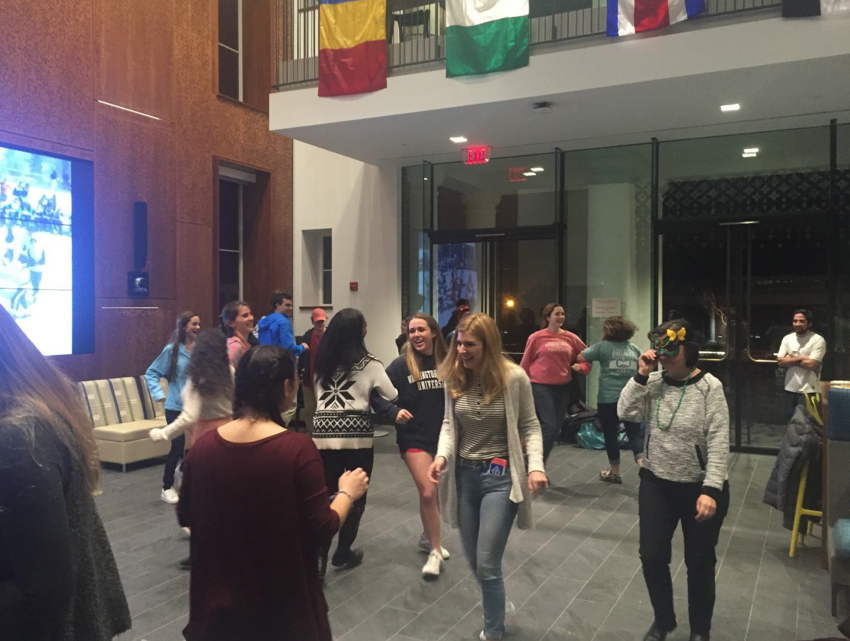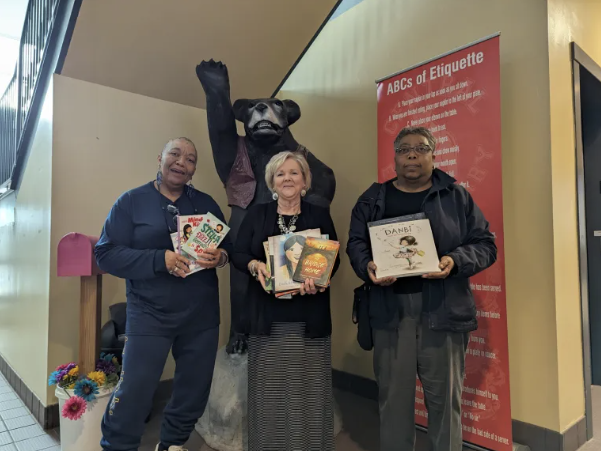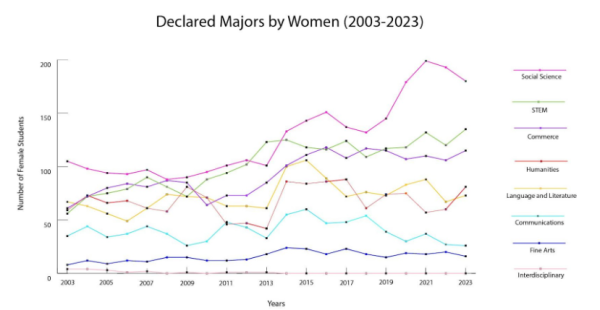Language students celebrate “Carnival” with the Romance Languages Department
Last week, students enjoyed music, dances and food from around the world to celebrate the season before Lent
March 6, 2017
Washington and Lee held a Carnival celebration inspired by pre-Lenten festivities around the world on Tuesday. The event was a combined effort by the Romance Languages Department.
Students from Romance language courses participated in musical presentations and dances performed around the world.
“There is a mix of Iberian, indigenous and African influences, more or less,” Professor Cristina Pinto-Bailey said.
Italian students kicked off the event with a southern Italian dance called the tarantella.
Classics professor Caleb Dance orchestrated a musical group activity in which students used their bodies and surroundings to make rhythms.
“I also work with a music and dance non-profit. While I was in Brazil, I learned a rhythm – samba reggae,” Professor Dance said.
Many Italian, Spanish, Portuguese and French classes discussed Carnival traditions prior to the celebration.
Peter Feldstein, ’18, is an Italian student. “We learned about [Carnival] to the point that now we’re basically experiencing it,” Feldstein said. “We had a chapter on Venice. Now we get to experience it firsthand.”
“In Venice, it’s a really big thing,” Shannon Belforti, ‘18, added. “Everyone goes around in masks and dances.”
Professor Pinto-Bailey, who teaches both Spanish and Portuguese, helped oversee the event.
“In the past, since 2013, the Portuguese students have done something for Carnival,” Professor Pinto-Bailey said. “We used to do just focusing on Brazil and this year we thought we can incorporate the other languages. It was a collaboration.”
Lucia Cespedes, a Spanish Teaching Assistant from Argentina, and Javier Buenadicha, a visiting Professor of Spanish, also helped plan the festivities.
“It’s something really big in Argentina. It’s a national holiday, with two days for Carnival. It’s one of those traditions that have been lost over time but it’s still very important,” Cespedes said.
In addition to music and dances, students shared various cultural dishes traditionally eaten during Carnival celebrations.
Guaraná, a Brazilian soda, and l’acqua frizzante, an Italian sparkling water were served. Other refreshments included Italian sugar cookies, Italian fried dough called le chiacchiere, vegetable rotini with olive oil, Spanish tortillas, crepes, and Argentinian vigilante, a sweet and cheesy pastry.
A live stream of samba school parades in Rio de Janeiro was projected accompanied by music. It was followed by more videos of dances and celebrations from Italy, Spain, Brazil, Argentina, Uruguay and France.
The holiday has Christian origins. It is traditionally celebrated before Ash Wednesday.
“We looked at the word carnivale in Italian – carne is meat, vale is without – they do it the week before Lent, and you go without meat during Lent,” Caroline Fletcher, ‘19, said.
The event gave students a first-hand experience with the international celebration here in Lexington.













